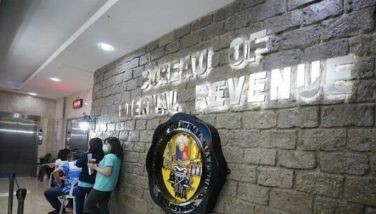Moody’s hikes forecast growth for Philippines to 7%
MANILA, Philippines — Moody’s Investors Service further raised its gross domestic product (GDP) growth forecast for the Philippines to seven percent this year, the lower end of the seven to nine percent expansion penned by economic managers.
Moody’s senior vice president Christian de Guzman said the stronger-than-expected economic growth in 2021 would carry over into 2022.
“We expect economic growth to accelerate further to seven percent in 2022, restoring the level of economic output to pre-pandemic levels and reflecting continued policy accommodation, the ongoing reopening of its economy – especially in light of the recent removal of quarantine requirements for international travelers that will support the recovery of the tourism sector – and the resulting improvement in the unemployment rate,” De Guzman said.
In September last year, Moody’s raised its GDP growth forecast for the Philippines to 6.8 percent from the original target of 6.5 percent for 2023.
The Philippines emerged from the pandemic-induced recession that stretched through five quarters with a GDP growth of 5.6 percent, slightly above the five to 5.5 percent target set by economic managers and reversing the 9.6 percent contraction in 2020.
“Pandemic-related risks to the outlook remain, as demonstrated by the emergence of the Omicron variant in January 2022 that led to a spike in coronavirus infections that exceeded previous highs, although the associated tightening of containment measures have since been relaxed,” De Guzman said.
Moody’s has affirmed the country’s Baa2 rating, equivalent to a notch above minimum investment grade, and stable outlook.
Its “a3” assessment of economic strength of the country balances the economy’s large size and fast growth over the past decade against low-income levels compared with investment-grade peers.
“We have set the score for economic strength above the initial score of Baa2 to reflect our view that the higher measure of volatility stemming from the steep economic contraction in 2020 does not represent a material weakening of the country’s growth dynamics,” he said.
Over the long-run, Moody’s believes that the Philippines’ young and growing population would underpin potential growth and reduce the burden of ageing-related costs on the economy and government finances.
Furthermore, the credit rating agency said remittances from overseas Filipino workers would continue to support private consumption, liquidity in the banking system and the external payments position.
At the same time, it added that the business process outsourcing (BPO) industry has made significant contributions in recent years to growth in the services sector and the widening surplus in the services trade balance.
“The global pandemic shock has posed an acute cyclical challenge to economic strength, especially as containment measures on the back of recurring spikes in infections have weighed on the consumption-driven economy,” De Guzman said.
With the manageable inflation despite elevated global commodity prices, De Guzman said the Bangko Sentral ng Pilipinas (BSP) is unlikely to tighten its policy rates in lockstep with the US Federal Reserve.
The debt watcher expects the Philippines’ budget deficit widening further from last year’s 7.6 percent of GDP to mirror the further buildup of national government debt.
Moody’s said that the credit profile of the Philippines has been characterized in recent years by strong economic performance, a strengthening fiscal position and limited vulnerability to external shocks, although the coronavirus pandemic has disrupted and partly reversed these trends.
On the other hand, structural credit challenges include low per capita income and some constraints to the quality of institutions, which stands in contrast to strong policy effectiveness.
- Latest
- Trending





























